If you want to test using the URL, then you will need to start a server from your test. You can explicitly start an embedded server, which is pretty common for tests. Something like
public class MyResourceTest {
public static final String BASE_URI = "http://localhost:8080/api/";
private HttpServer server;
@Before
public void setUp() throws Exception {
final ResourceConfig rc = new ResourceConfig(Service.class);
server = GrizzlyHttpServerFactory.createHttpServer(URI.create(BASE_URI), rc);
}
@After
public void tearDown() throws Exception {
server.stop();
}
@Test
public void testService() {
Client client = ClientBuilder.newClient();
WebTarget target = client.target(BASE_URI).path("service");
...
}
}
It's basically an integration test. You're starting the Grizzly container and loading a ResourceConfig to the server with only the Service class. Of course you could add more classes to the configuration. You can use "real" resource config if you wanted.
The above test uses this dependency
<dependency>
<groupId>org.glassfish.jersey.containers</groupId>
<artifactId>jersey-container-grizzly2-http</artifactId>
<version>${jersey2.version}</version>
</dependency>
Another option, which is the one I prefer, is to make use of the Jersey Test Framework, which will start an embedded container for you. A test might look something more like
public class SimpleTest extends JerseyTest {
@Override
protected Application configure() {
return new ResourceConfig(Service.class);
}
@Test
public void test() {
String hello = target("service").request().get(String.class);
}
}
Using this dependency
<dependency>
<groupId>org.glassfish.jersey.test-framework.providers</groupId>
<artifactId>jersey-test-framework-provider-grizzly2</artifactId>
<version>${jersey2.version}</version>
<scope>test</scope>
</dependency>
And embedded Grizzly container will get started under the hood, with your ResourceConfig configuration. In both examples above it is assumed the @Path value for the Service class is service, as you can see in the test URLs.
Some Resources
Some Examples
UPDATE
If you're not using Maven, here are the jars you will need to run an embedded Grizzly container for the Jersey Test Fraemwork

I usually search for all my jars here. You can select the version and there should be a link in the next page, to download. You can use the search bar to search for the others.
Here's a simple running example, once you have all the jars
import com.sun.jersey.api.client.WebResource;
import com.sun.jersey.api.core.DefaultResourceConfig;
import com.sun.jersey.spi.container.servlet.WebComponent;
import com.sun.jersey.test.framework.JerseyTest;
import com.sun.jersey.test.framework.WebAppDescriptor;
import javax.ws.rs.GET;
import javax.ws.rs.Path;
import junit.framework.Assert;
import org.junit.Test;
public class SimpleTest extends JerseyTest {
@Path("service")
public static class Service {
@GET
public String getTest() { return "Hello World!"; }
}
public static class AppConfig extends DefaultResourceConfig {
public AppConfig() {
super(Service.class);
}
}
@Override
public WebAppDescriptor configure() {
return new WebAppDescriptor.Builder()
.initParam(WebComponent.RESOURCE_CONFIG_CLASS,
AppConfig.class.getName())
.build();
}
@Test
public void doTest() {
WebResource resource = resource().path("service");
String result = resource.get(String.class);
Assert.assertEquals("Hello World!", result);
System.out.println(result);
}
}
You're most likely not going to have the resources and ResourceConfig in the same class as the test, but I just want to keep it simple and all visible in one class.
Whether you are using a web.xml or a ResourceConfig subclass (as shown above), you can cut down what you test by using a separate ResourceConfig, built in the test class, as I have done. Otherwise, if you are using your normal ResourceConfig class, you can just replace it in the configure method.
The configure method, is pretty much just building a web.xml file, just in Java code. You can see different methods in the WebAppDescriptor.Builder, like initParam, which is the same as an <init-param> in your web xml. You can simply use the string in the arguments, but there are some constants, as I used above.
The @Test is you usual JUnit test that will run. It is using the Jersey Client. But instead of creating the Client, you can simply just use the preconfigured Client by just accessing the resource() method, which returns a WebResource. If you are familiar with the Jersey Client, then this class should not be new to you.
